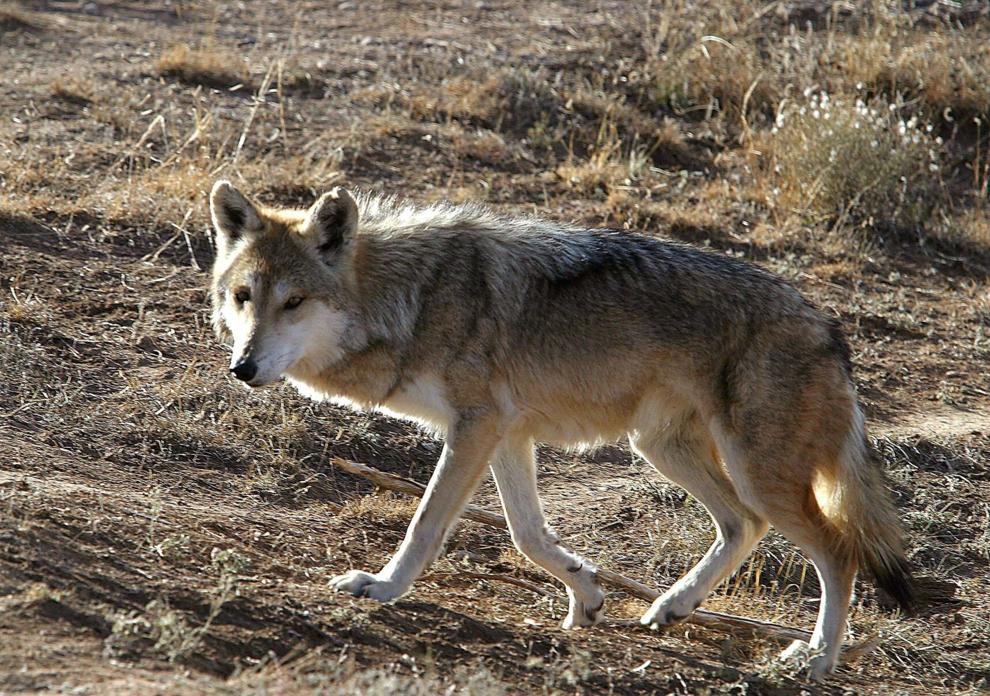Roaming Mexican gray wolf captured
A Mexican gray wolf walks in an enclosure at Wildlife West Nature Park in Edgewood in 2002. A year-old female wolf that had roamed north of Interstate 40 was captured Sunday. (Journal File)
SANTA FE – The U.S. Fish and Wildlife Service on Sunday captured a Mexican gray wolf that had roamed north of Interstate 40 to the dismay of several conservationist groups. The year-old female wolf had left the protected area in southern New Mexico and southeastern Arizona where the FWS manages the population. The FWS located the wolf via helicopter and is now holding it in captivity. “It’s pretty typical for year-olds to leave their pack to go look for mates and expand to new areas,” FWS Mexican Wolf Recovery Coordinator Brady McGee said. “The unusual thing is how far she did go. She traveled over 350 miles from Arizona to wind up by herself kind of in the middle of nowhere.” He said the wolf was captured because she would not have contributed to the recovery of her species in an area with no other known Mexican gray wolves. He also said lone wolves have more difficulty bringing down prey, and that there was a risk the wolf would breed with domestic dogs. Because Mexican gray wolves are protected under the Endangered Species Act, killing one is a federal crime. McGee said that, nevertheless, there was a risk of someone trapping or shooting the wolf, possibly mistaking it for a coyote. He said the wolf could be re-released into the wild as soon as April, potentially returning to the experimental population area in New Mexico and Arizona, or going to Mexico with a mate, where her genetic value would be higher. McGee said the wolf’s path is a sign that the population is growing and expanding. “We’ve never had a wolf before that has been documented hitting the north end of the White Sands Missile Range, the Manzano Mountains, moving up north across I-40 and going up into this area about 15 miles east of Angel Fire.” The population has seen steady growth over the past six years and the FWS recorded 196 wolves in its 2021 count, which is the most recent published data. Several conservationist groups disagree that capturing and relocating the wolf was the right move. Deputy Director of the Western Watersheds Project Greta Anderson said part of her organization’s vision for full wolf recovery is for them to occupy territories north of I-40. “We have to let wolves be wolves and this heavy-handed management that tries to force them into certain areas and keep them in specific places is not going to work in the long term if we are really hoping to recover this population,” she said. She said that, in order to succeed genetically, the Mexican gray wolf needs multiple populations in various places, and northern New Mexico has the potential to be one of those places.
Copyright © 2023 Albuquerque Journal






